We Need to Create a Shared Language Around ESG


ESG, which refers to how environmental, social and governance factors pertain to business, has been all over the headlines lately — and the debate has become increasingly contentious. Billionaires like Elon Musk call it a “scam,” consumers and business leaders see it as a strategic priority to develop more sustainable business models, while governments are implementing ESG standards as a way to act in the public’s interest.
Each of these diverse sets of stakeholders have a valid claim to ESG, but they also have radically different priorities when it comes to how it’s used. It’s no wonder, then, that debates around the topic between these groups often devolve into arguments, name-calling, and more shouting than listening.
In order to move the debate from combative to constructive, we need a shared language. Stakeholders need to be able to express what they want out of the movement, and be able to understand what others want out of it (even if they are approaching it from a different angle).
When debating ESG, stakeholders typically fall into one or more of the following categories in terms of what they want out of the movement: assurance, impact or regulation.
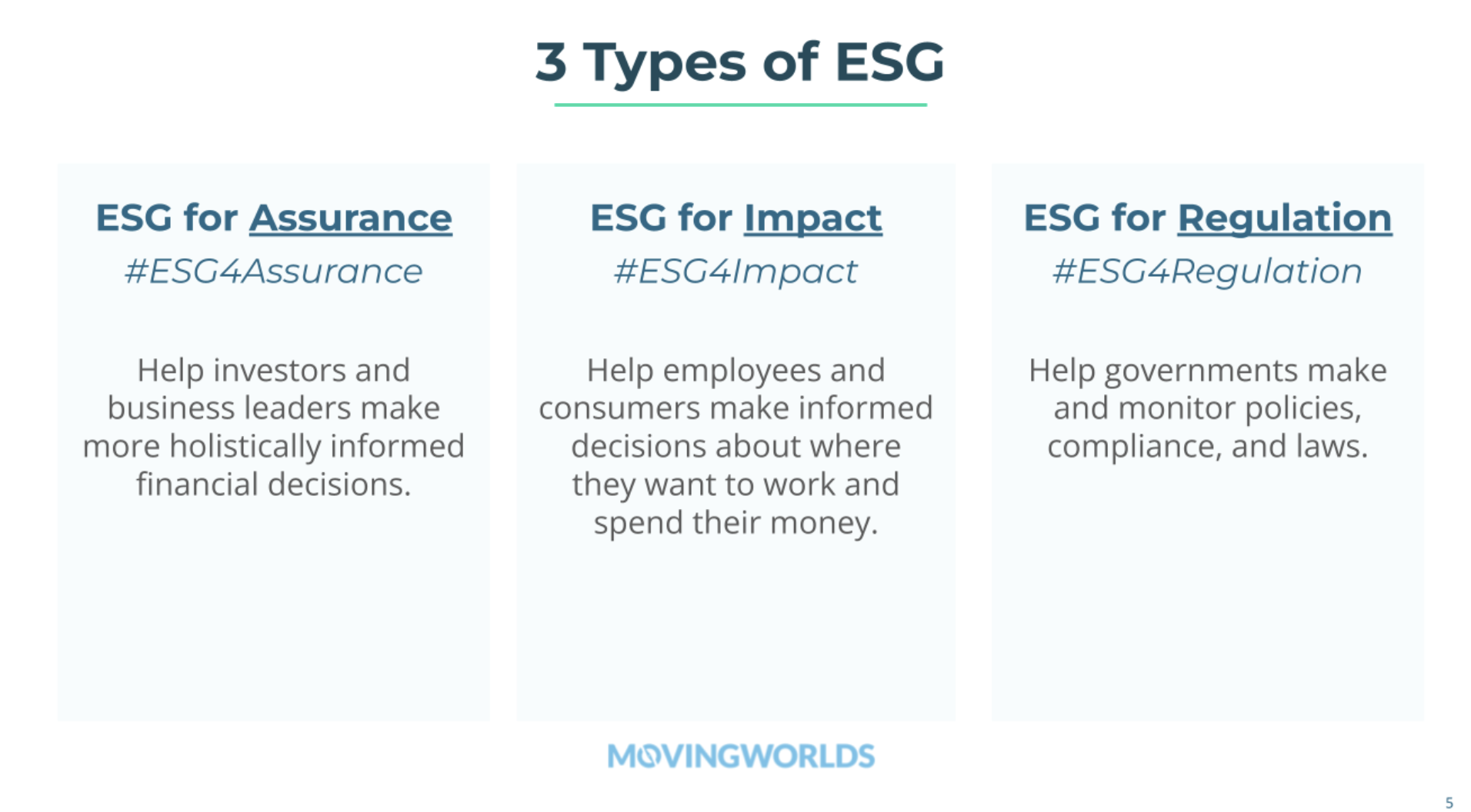
In this article, we’ll take a closer look at each, and suggest how they can be used together to facilitate the implementation of meaningful practices that positively impact society and the environment.
ESG for assurance
ESG for assurance is all about adjusting for financial risk. From this perspective, ESG is a means to make better financial decisions — rather than a way to drive sustainable business transformation. This is what investors, board members and chief executives care the most about: monitoring potential risks to the financial bottom line (for example, a lawsuit for non-inclusive hiring practices, or decreased future earnings as natural resources become less available).
There are a number of frameworks out there to measure and report on this, all of which are voluntary, and some of which are more comprehensive than others. The conversation around ESG reporting continues to evolve, and increasingly, is moving toward a standard of Double Materiality:
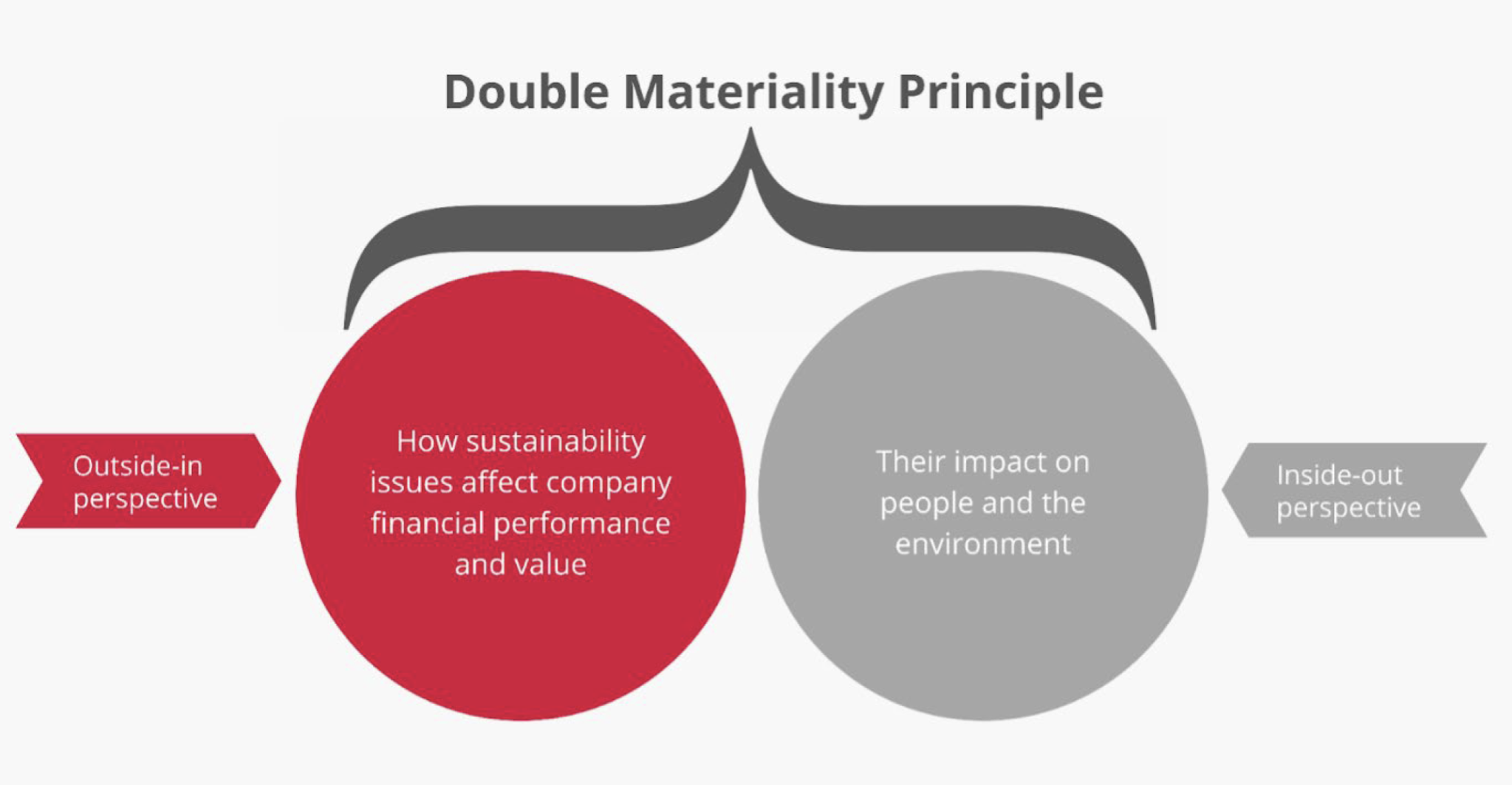
A new report from Reuters has a nice explanation of this, and Proof of Impact recently published a piece on this same topic.
That being said, until we have a universally accepted standard for reporting, it will continue to be difficult to compare ESG performance across companies using different frameworks. International bodies are working to solve that problem, and at the U.N. COP26 climate talks in 2021, the International Sustainability Standards Board (ISSB) was established in order to merge the many ESG disclosure standards into one, and to encourage the uptake of these standards globally.
It’s important to note that this does not mean that ESG for assurance has anything to do with progress toward the U.N. Sustainable Development Goals (SDGs). Even if we arrive at a universal standard for reporting, companies can still report on factors like their environmental impact (carbon emissions, as an example) without any intention to reduce or address them.
While it’s true that ESG will never reach its full potential when viewed exclusively through a financial materiality lens, it is still important to work toward a universal standard for the sake of comparison and global adoption. However, as EY points out, the need to build consensus across the globe puts global standards at risk of being drawn down to the lowest common denominator. That’s why, on its own, ESG for assurance isn’t enough.
ESG for impact
ESG for impact is about leveraging ESG to drive more sustainable, equitable business models. As opposed to assurance, which is about mitigating financial risk, ESG for impact is about creating positive social and environmental value.
ESG for impact is typically driven by a company itself, rather than an external reporting or regulatory body. A company will typically be motivated to make a real impact on environmental, social and governance factors when it sees the possibility of realizing a positive returns on that investment, including:
- Building the brand and attracting new and more loyal customers
- Helping tap into new markets and customers
- Recruiting, engaging, and retaining the best employees
- Driving better governmental regulations and relationships
- Qualifying for preferential treatment with other business partners and suppliers
Microsoft, for example, was not forced by any external body to make investments in becoming both carbon neutral and water negative, however, it did so because it helps build goodwill with some of its biggest customers (including governments) and also helps it retain and engage its employees.
As mentioned above, realizing the potential of ESG for impact still requires a universal standard to serve as a common measuring stick. The difference is that when reporting from this perspective, an additional step is taken to then address and improve those factors (versus simply disclosing them).
Social impact professionals, consumers and employees tend to care the most about impact. In some cases, politicians do as well, given that many of the priorities of potential voters relate to society and the environment. However, a desire to do good from a handful of companies is not enough to change the economy and achieve the SDGs. This is why ESG for regulation is still needed.
ESG for regulation
ESG for regulation is something that is imposed by an outside governing body — like a national government or the U.S. Securities and Exchange Commission (SEC). Globally, governments have imposed different ESG and CSR (corporate social responsibility) laws. Most of these are for disclosure and assurance purposes, and to facilitate the adoption of universal standards that make comparison across sectors and geographies possible using the same measuring stick.
For example, earlier this year the SEC proposed a set of rules to standardize and enhance climate-related disclosures for investors. These rules don’t set specific targets that companies need to achieve for impact purposes, but rather, are meant to unify ESG for assurance frameworks for easier comparison. Still, some governments, like India and Singapore, take regulation a step further by actually building in criteria related to impact.
While not explicitly tied to ESG for impact, ESG for regulation is still an important part of scaling the movement. While investors will use those disclosures to make financial decisions, employees and consumers can use that same information to make decisions about whether or not to engage with certain companies based on their track records.
Combining the three to move the movement forward
The ESG space is rapidly evolving and expanding, and debates are an inherent part of that. But for those debates to lead to any type of meaningful outcome, all stakeholders need to be more active in owning their intentions for ESG initiatives and reporting — and also in labeling and communicating them.
Indeed, at the most basic level, companies need to report on environmental, social and governance factors for assurance and regulatory purposes. But those things aren’t necessarily mutually exclusive to ESG for impact -— in fact, assurance, impact and regulation are all needed for the movement to reach its full potential.
ESG can help facilitate better financial decisions and progress toward the SDGs. After all, as former CEO of Unilever Paul Polman puts it, investing in a more sustainable and regenerative economy is “the biggest business opportunity of our time”... and the future of our planet depends on it.
Image credit: Nick Staal/Unsplash
Graphics courtesy of Moving Worlds
The Amazon Rainforest is a Massive Bioeconomic Opportunity


From the start of his presidency, Jair Bolsonaro has promised the Brazilian people free economic development in the Amazon rainforest. Half a year into his term, he was telling the world: “We preserve more [rainforest] than anyone. No country in the world has the moral right to talk about the Amazon. You destroyed your own ecosystems.”
Bolsonaro's decision to allow deforestation in the Amazon rainforest for ranching and agriculture is shortsighted, especially when you consider the climate consequences, as the Council on Foreign Relations (CFR) outlines in an August brief. Even still, his popularity with Brazilians makes sense. Why wouldn’t a nation with plentiful natural resources want to make use of those resources and increase its gross domestic product?
According to the CFR, Brazil has become the world’s top exporter of beef and soy. Could Bolsonaro be right about unrestrained deforestation in the Amazon being the right economic decision for Brazil?
A new model for economic growth: The bioeconomy
Or maybe the desire for economic development and the need for conservation don’t have to be at odds. In the United States, the Forest Stewardship Council (FSC) is able to find a confluence between those goals through responsible forest management. That means the owners of forests in the U.S. are able to gain profits from the land while keeping ecosystems intact. Business activities like selective logging, hunting and recreation can make use of forests in a way that maintains them for generations to come, and they give landowners an incentive to keep forests the way they are. In a sense, forest management shows landowners the true value of trees.
In the Amazon rainforest, economic opportunities look more like acai berries and ecotourism. Acai palms grow natively in the rainforest, and the acai industry has benefited more than 500,000 families over the last 20 years, Carlos Nobre, a Brazilian earth system scientist and member of the Royal Society, said at this year’s United Nations Science Summit. Some acai farmers are reaching the middle class, Nobre said, having come from the depths of poverty.
Compared to conventional cattle and soy industries that require a transformation of the land, acai also provides an economic advantage. Annually, cattle provide $100 per hectare and soy $600, while a hectare of acai is valued at $1,000, Nobre explained.
Opportunities for developing a bioeconomy in the Amazon rainforest abound
The 15-foot piraracu fish, oils, pulps, butters, craftsmanship — these are all economic opportunities that Amazonians have only begun to explore, Nobre said. That’s not to mention the incredible potential for ecotourism. “Two streets here in New York have more companies than 6.5 million square kilometers [in the Amazon rainforest],” he said, emphasizing the economic possibilities. Investment in a bioeconomy would reap benefits across the triple bottom line — for indigenous people, biodiversity and climate, as well as profit.
But a lot of work will be required to achieve this goal. The Brazilian Amazon has already seen more fires this year than in all of 2021. Also this year, the nation set another record for deforestation. In April alone, the equivalent of 140,000 football fields were transformed. This is just months after Bolsonaro signed the COP26 pledge to end deforestation by 2030.
We’re just a month away from an election that may prove supportive of a bioeconomic approach, though. Former president Luiz Inácio Lula da Silva is running, and he is pursuing a rainforest alliance with Indonesia and the Democratic Republic of Congo, which has the second-largest rainforest in the world, in the case that he is re-elected. It was under Lula’s presidency, from 2004 to 2012, that deforestation in the Brazilian Amazon decreased by over 80 percent. Rates have increased by 60 percent under Bolsonaro.
While many Brazilian Amazonians pursue sustainable and traditional industries, the environmentally lax approach of the current administration actively harms their initiative. Whoever wins their presidential bid should instead be anxious to get behind bioeconomic activities.
In an article for Forest Trends, Beto Borges states the economic potential teeming in the Brazilian Amazon: “As a prominent economic force and the world’s largest forest country, Brazil is strategically positioned to be a global leader in shaping and modeling a new way of doing business, a challenge and opportunity as countries slowly turn to post-pandemic recovery.”
Image credit: Jaime Spaniol/Unsplash
How Can Businesses Support Women-Owned Brands?

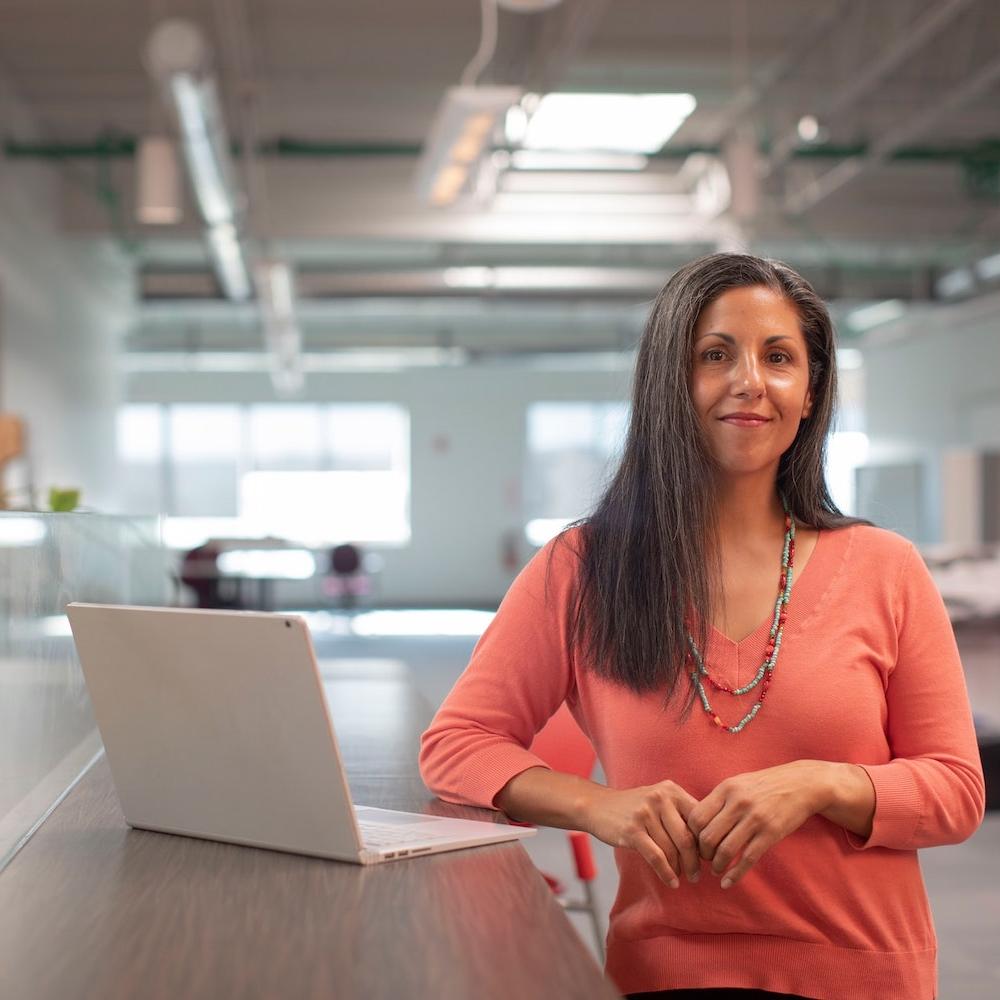
Over the past few decades, the gender gaps in the working world regarding pay, leadership roles, advancement opportunities and funding have somewhat narrowed. But they still remain too wide for many women struggling to elevate their brands in a male-dominated business climate.
In many ways, we still see women playing second-fiddle to their male counterparts, even though nearly half of all businesses — 40 percent, to be exact — are owned by women. Those female-owned enterprises generate $1.8 trillion a year, making women a formidable force in the business world.
The question is: How can venture capitalists and other businesses looking to make deals with founders support women-owned brands?
Supporting founders through funding
According to recent studies, a paltry 2.3 percent of startups that received venture capitalist (VC) funding in 2020 were women-led. This lack of support from funding sources does not match the number of women-owned brands that exist, leaving many startups out in the cold, seeking alternative means of funding their ventures.
The pandemic has also had a disproportionately negative impact on the careers of women — highlighted, among other things, by the sharp decline of financial backing women founders have received. A study by McKinsey showed that women’s jobs were 1.8 percent more vulnerable than their male peers during the pandemic. The added responsibility on many of these women serving as unpaid caregivers to family members has only left them further behind in terms of closing the gender gap.
While some VCs have put forth funds specifically for women-owned businesses in an attempt to address the obvious disparity, in order to permanently close the gap, the 2.3 percent statistic needs to be addressed, and more funding needs to be made readily available for women-owned brands. Funding is the crucial first step to supporting these ventures and closing the widening gaps.
It’s all about who you know
Women founders and entrepreneurs must harness the power of networking to further their business ventures. In business, who you know — rather than what you know — has always been a deciding factor in whether a business succeeds or fails. With this in mind, women-owned startups should seek out business-to-business networking events, partner with other female-owned companies for supplies or marketing assistance, and seek out connections within their industries.
Partnering with other women-owned brands can help create a robust network that can be leveraged when a business needs exposure, funding or assistance. Additionally, B2B deals can be better negotiated successfully when the people in the room have a history together, know one another from a business standpoint, and can vouch for one another.
Bringing attention and resources to women-owned brands
Diversity and equality consciousness has been having a moment in the business world in the last few years, which only stands to further benefit female founders seeking a leg-up in historically male-dominated spaces. The more consciousness that is raised regarding gender gaps in the business world, the more solutions will be brought to the table, and the more attention female-owned businesses will receive.
Events such as National Women’s Small Business Month, which happens every October, seek to bring awareness to the 12.3 million women-owned brands and businesses. Websites such as AboutWomenOwned also help to elevate female-owned businesses.
There are also government programs that exist solely to support female-run businesses. When community members and other businesses stand up for female enterprise and take their concerns to the government, it can lead to more widespread change.
Diversity = performance
Business-minded people — male or female — rely on metrics to analyze and drive performance. The metrics for diverse businesses show that having a female perspective at the helm can lead to enhanced performance for the business overall: A McKinsey report showed that organizations that were more gender-diverse outperformed their less-diverse counterparts by up to 25 percent. An investment in women-owned brands, by consumers and by other businesses, is an investment in furthering innovation and furthering female economic growth across the board.
Image credit: LinkedIn Sales Solutions/Unsplash
Preventing the Looming Climate Crisis Through Sustainable Business Leadership
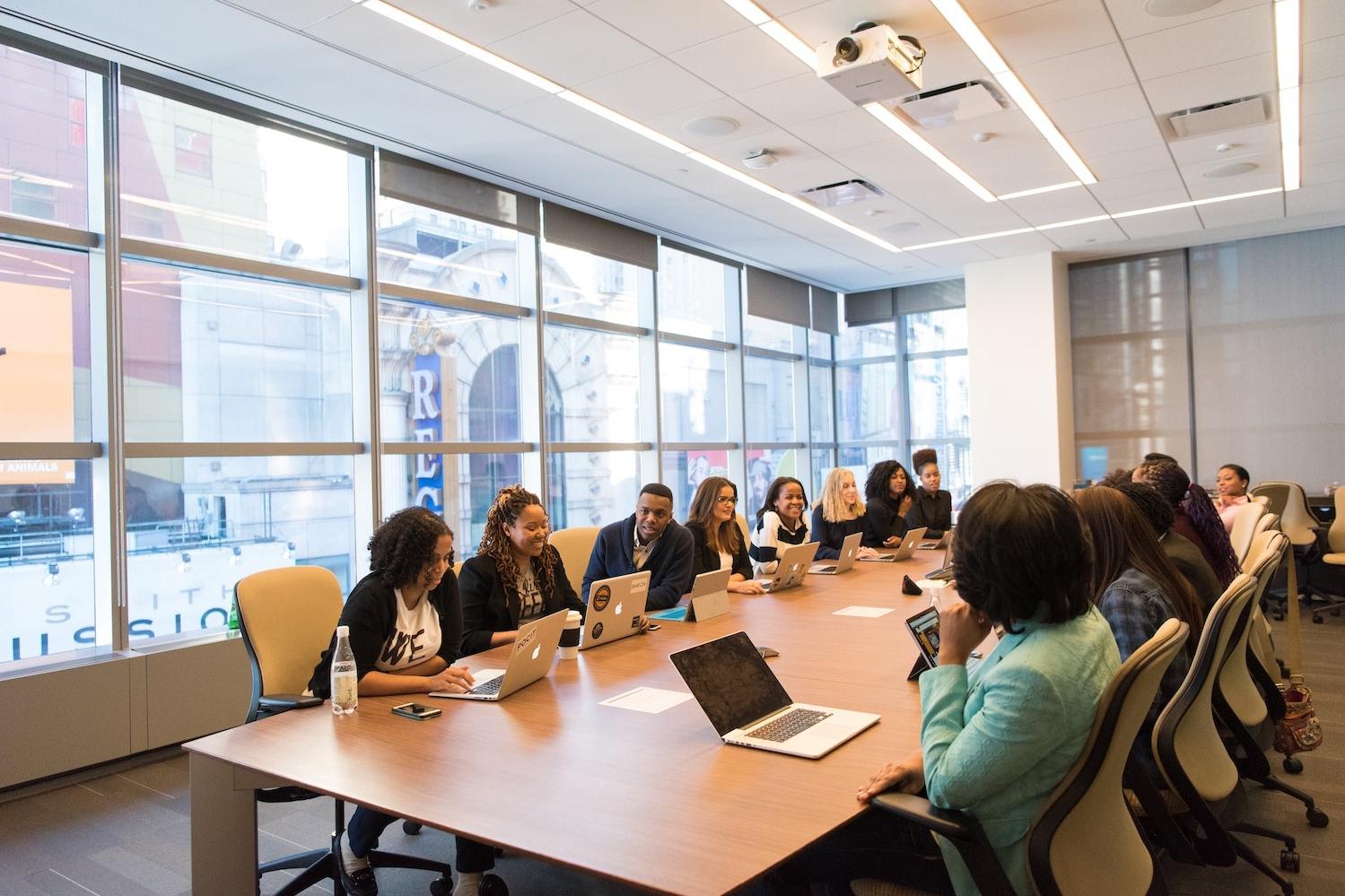
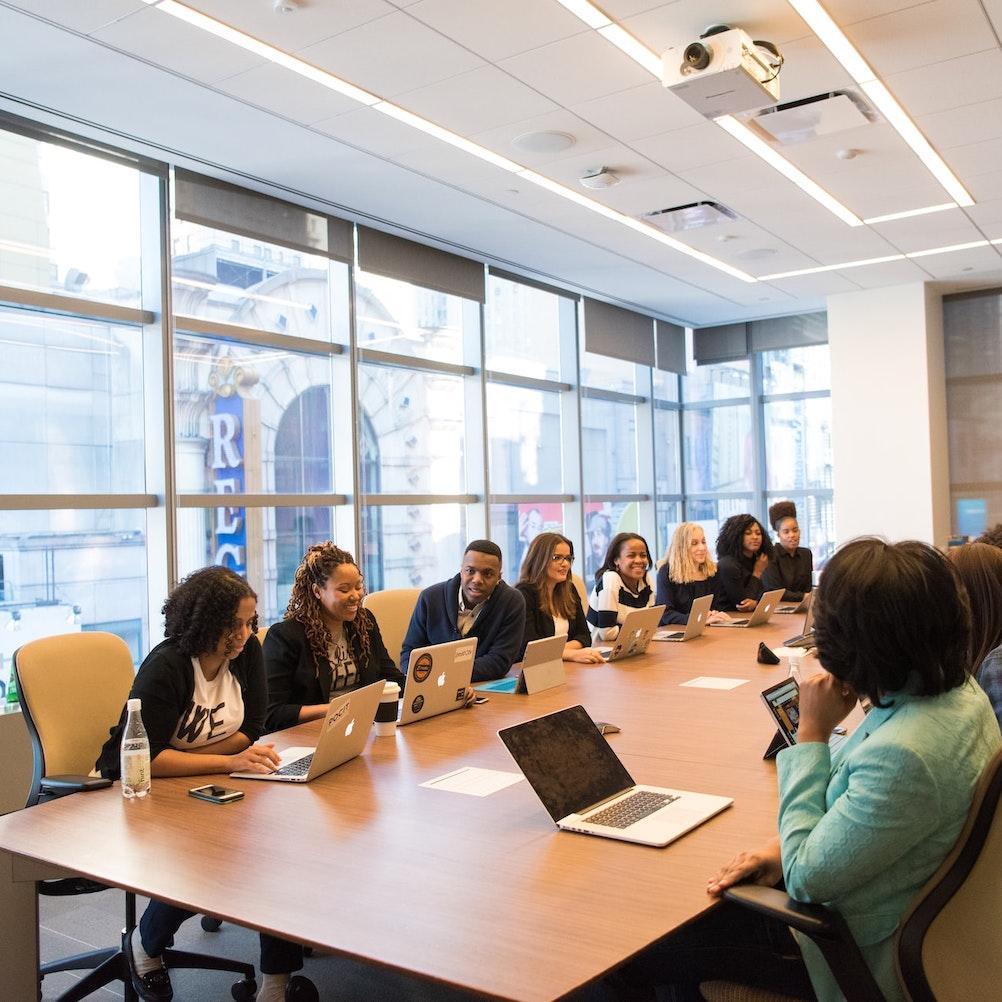
Research by management consulting firm Russell Reynolds Associates reveals that while CEOs say they are pursuing sustainability within their organizations, employees and next-generation leaders disagree. As the clock ticks down to the climate crisis, leadership advisor and former CEO of Russell Reynolds, Clarke Murphy, asserts that averting it will depend on leaders who are invested in a timely shift toward stakeholder capitalism. He spoke with TriplePundit about what makes this next generation of leaders different and how they are already affecting change in major corporations worldwide.
“Boards of directors have realized that this is a requirement of successful governance,” Clarke said of the movement he is witnessing toward sustainable leadership. “CEOs and boards see that it has to be a part of it.” He said almost all private equity firms have concluded that “a more sustainable footprint creates more value.”
So what attributes do these next-generation executives boast that make them more equipped to promote sustainable operations? Clarke described them as having multi-level systems thinking — able to understand the complexity of intersecting issues and fold them into their solutions. “The ability to do this differentiates them,” he said. And as a result, they’re more likely to involve stakeholders, including regulators and competitors. “When they interviewed and tested these people, they are much more socially oriented… They interact more deeply and broadly with others and tend to have deeper listening skills.”
“These execs tend to be able to challenge their own way of thinking,” he said — which results in novel solutions. “They set pretty audacious goals and drive actions and investment toward those goals.” He gave the example of Volvo’s biodiesel trucks and the lack of an adequate fuel supply. Instead of scrapping production, “they went back and took care of it.”
“It’s about action orientation. This is the issue of the next two generations,” he explained. “Their action orientation to speak up and act up is powerful.” He pointed to a proliferation of moonshotters in particular — leaders he described as taking action instead of waiting around for all of the answers.
But will it be enough to stave off climate disaster? Clarke is hopeful. “The reason I wrote the book [Sustainable Leadership, released this month] is that we need to take it from tens of business leaders to tens of thousands. We hope we can accelerate the progress.” But while many people tend to focus on the climate alone, he pointed to the interconnection between the breadth of issues facing humankind on a planetwide basis — from water usage to poverty, equitable compensation, access to education, sustainable cities and more. As he wrote in Sustainable Leadership: “Corporations can’t thrive in a world of poverty, inequality, social unrest and environmental crisis. Markets will shrink, supply chains will break, consumers and employees will revolt and external regulators will slap you with punitive fines and operating restrictions.”
Clarke is also confident that sustainability can be achieved without sacrificing profit for purpose. “I think most businesses who are sincere about action see profit and purpose as aligning. I don’t think they’re putting purpose ahead of profit. The best companies have aligned them.” He explained that some businesses have even gone on to enhance profit as a part of purpose. “Not because they’re magical, but because they’re doing things like using less power and shipping across the ocean less.”
Clarke also pointed out that the best companies are recognizing their effect on communities and society as a whole, starting with the supply chain. He gave the example of Duke Energy's Blue Horizons program in North Carolina. The utility went from nearly causing a full-on ecological disaster when it leaked 40,000 tons of coal ash into the Dan River in 2014, to beginning to phase out coal and switch to renewables under CEO Lynn Good. “It took them a while to figure out,” he said, but eventually the energy provider realized that listening and investing in the community would pay off.
Clarke wrote: “The transition toward sustainable business is so much more than the right pledges, plans, programs or words on a page. It’s about leadership.” Which is why the next few years could be a time of reckoning for many businesses. While he expects to start seeing results from those that took action soon, “The ones that talked a big game but aren’t doing anything, we’re going to uncover them.”
Image credit: Christina @ wocintechchat.com/Unsplash
Transforming Our Fragmented Produce Industry Is Imperative
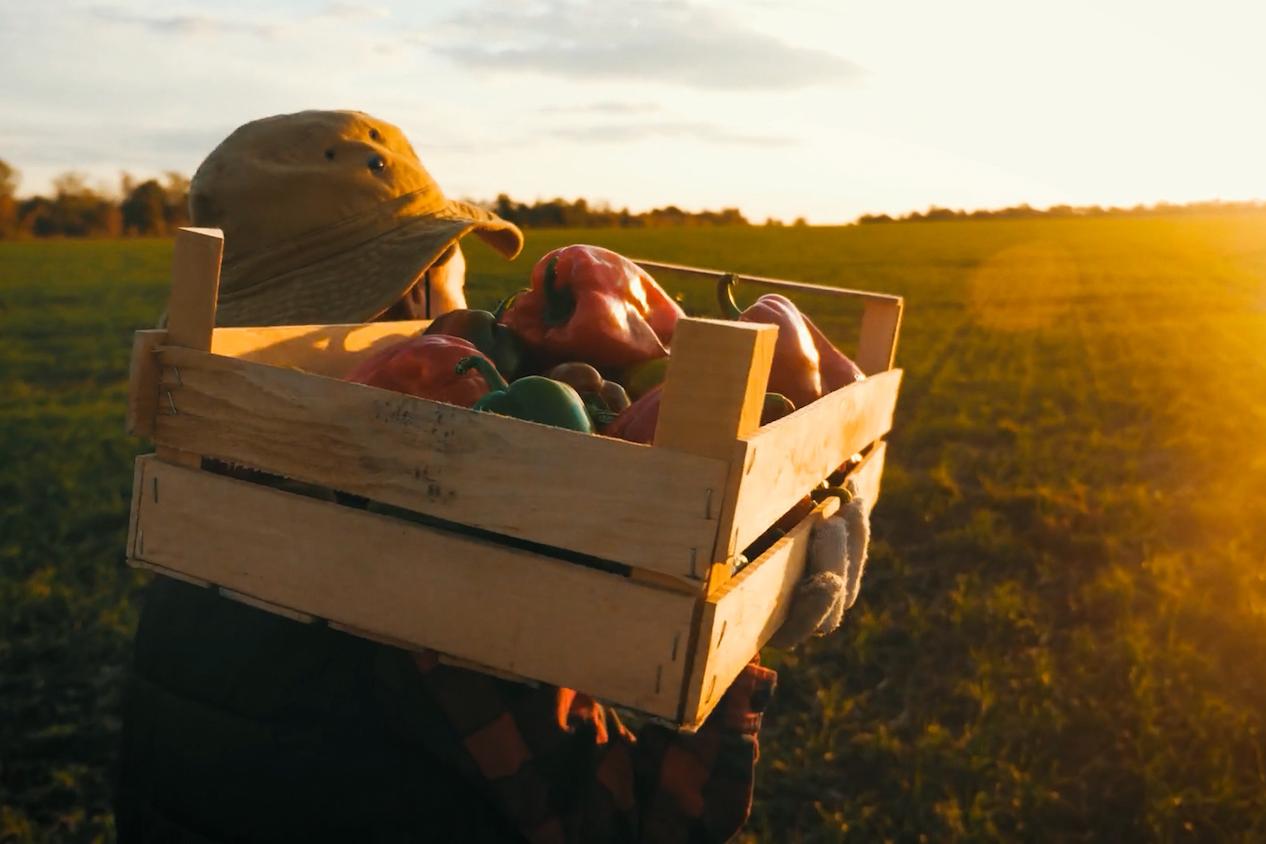

A farmer harvests bell peppers in Sonora, Mexico.
Imagine driving from Washington, D.C., to Denver. It’s about 1,600 miles — or, according to many studies, the distance the average fruit or vegetable travels before it gets to American consumers. Road trips may be great for the soul, but they’re not the most efficient way to get produce to consumers’ plates. And that’s just one example of the disadvantages of the fragmented produce industry, where unnecessary blind spots create both food and economic waste.
Demystifying the supply chain and expanding the resources available to buyers and growers will help transform the produce industry into a connected and sustainable movement.
The reality of today’s produce industry
Simply put, the world cannot afford to waste food. In 2021, 193 million people were acutely food insecure and in need of urgent assistance, according to the Global Report on Food Crises. That is indeed a crisis, and without urgent action, it’s likely to get worse. Food insecurity is exacerbated by the other crises humanity faces, including climate change, global conflict, economic shutdowns and supply slowdowns.
Food waste certainly contributes to these crises, but it also represents an opportunity to update food systems. The produce industry in particular is ripe for improvement.
At $1.3 trillion in annual sales, the global produce market is enormous in scale and has food waste issues to match. Some measures to mitigate this waste — like picking produce early — can have undesirable side effects, such as reducing flavor and nutritional benefits. Despite these efforts, nearly 50 percent of all fruits and vegetables grown globally still goes to waste, according to the United Nations.
The fruits and vegetables that do make it to Americans’ plates don’t arrive in the most efficient way. In the process of traveling the aforementioned 1,600 miles, the average produce item is handled four to eight times by middlemen and marked up to three to six times the price. This creates approximately 50 percent of economic waste that is incurred by the consumer at the supermarket.
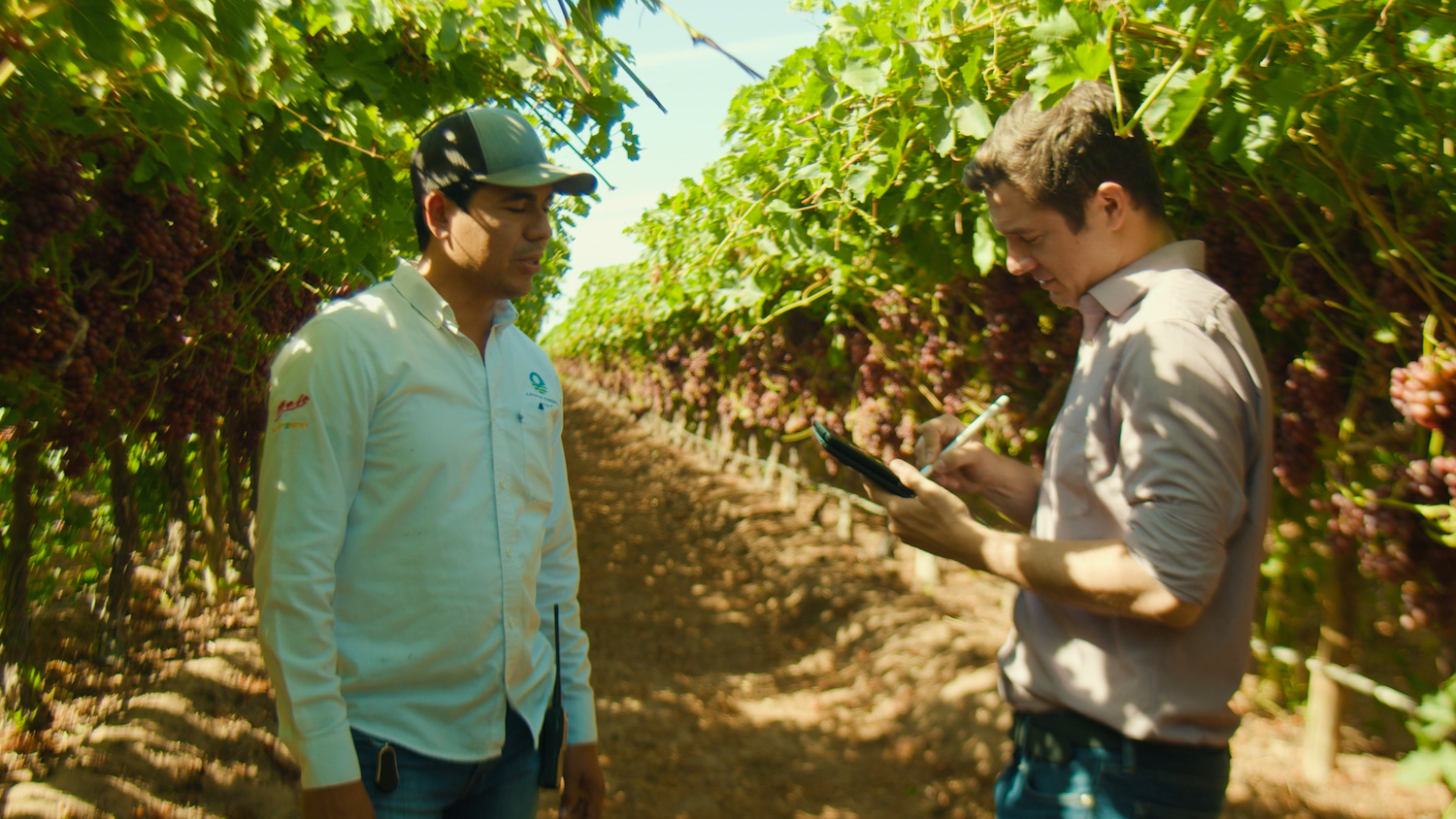
The opportunity for operational solutions
Consumers are more interested than ever in the provenance of their food, especially produce. Ideally, this would be transparent across the board, making it clear where each fruit or vegetable came from, how it was grown, what was put into it and who handled it.
The problem is that fresh produce is not traded on any commodities exchange. The industry lacks capital, pricing data, and platforms to connect electronically, creating inefficiencies and a lack of transparency. For generations, growers and buyers have had to operate their businesses while navigating around blind spots.
Growers have had limited access to the buyers of their produce and industry data to help optimize their business. Buyers can’t usually travel to each farm to observe operations and uncover business opportunities. It’s no surprise that this system has made it difficult to build trust and make progress at scale.
There’s a bright side among these challenges: many of the deepest issues in the produce industry are operational. With the right operational solutions, they can be overcome. Continued work to transform the produce supply chain into a more efficient and transparent food system will better equip the produce industry to meet the global food demand and avert crises by getting more food to the right people and places at the right time.
A supply chain that empowers buyers and growers
Exciting, groundbreaking work is happening at the genetic, seed, and farming levels to improve efficiency and reduce waste in the produce industry. Now, efforts must be focused on the post-harvest side of the business.
This is where demystifying the produce supply chain comes in – and expanding the resources available to growers and buyers. Both can be accomplished by harnessing the possibilities of digitalization. For example, companies working at the intersection of agriculture and sustainability have pioneered technology to create specialized marketplaces that allow growers and buyers to access each other directly, effectively reducing post-harvest waste, economical waste, and the 1,600 “food miles” fresh produce travels before reaching the dinner table.
These types of solutions help meet the highest-priority needs of both parties. For growers, greater connection means greater visibility into buyers’ requirements and information, such as fair market pricing, supporting their business objectives. For buyers, it means a better line of sight into their partners, including which growers are selling direct (or would like to do so) and using growing practices in alignment with environmental, social and governance (ESG) requirements.
It must be a priority to accelerate investment in this type of innovative, expansive solution that links buyers and growers – and delivers the pricing data, operational insights, and transparency they need to make more strategic business decisions.
Fixing fragmentation in the produce industry can bolster businesses, reduce food waste and provide consumers with higher quality fruits and vegetables. Ultimately, a connected and sustainable movement can make wide-ranging impacts, helping to mitigate climate change and support a healthier world with more equitable access to fresh food for all.
Images courtesy of ProducePay
With Inflation Reduction Act in Hand, Renewable Energy Wins Job Creation Battle
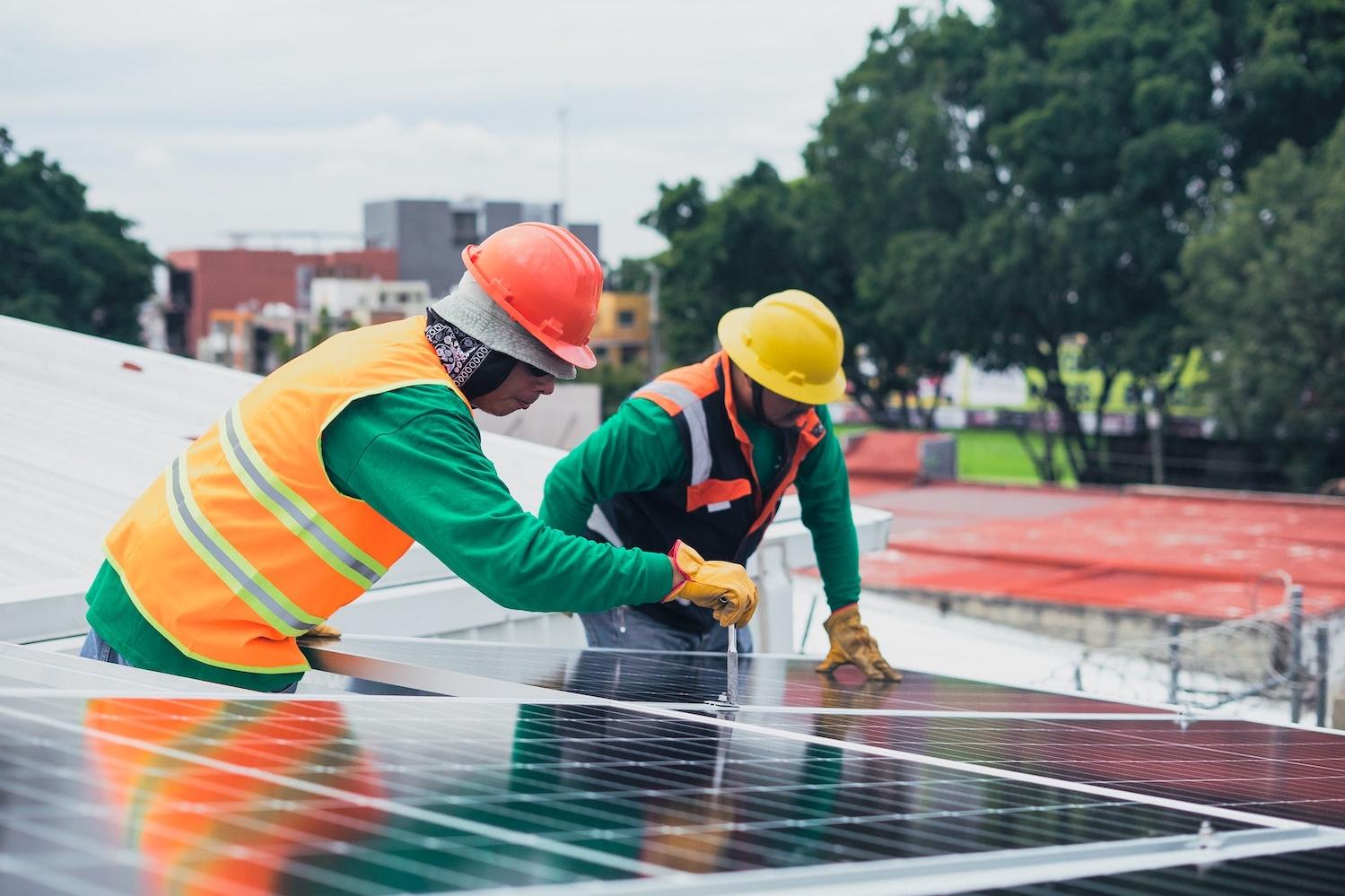
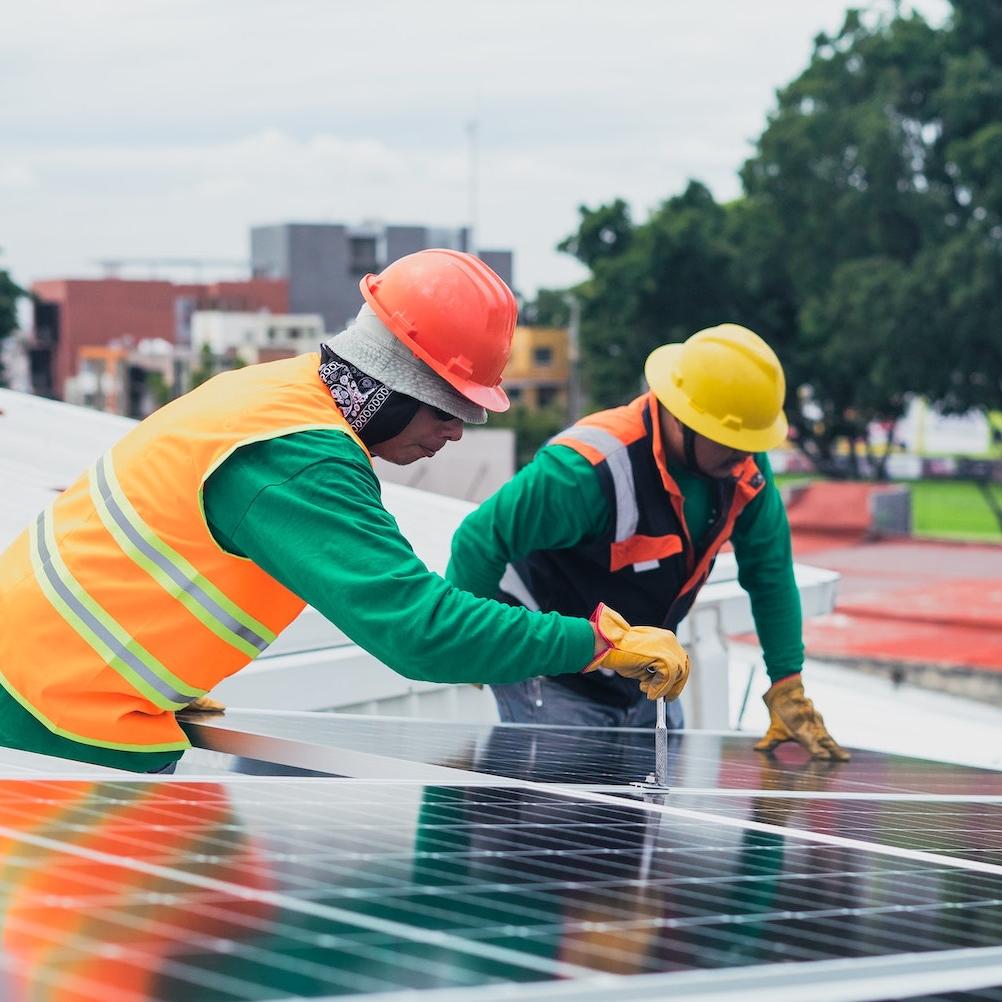
Fossil energy advocates have long used the carrot of job creation — and the stick of job loss — to make their case, regardless of the impact on the environment and local communities. That argument has lost force in recent years, and now the Inflation Reduction Act will finally put it to bed by accelerating the creation of tens of thousands of new jobs in clean energy fields.
Follow the money: U.S. clean energy industry capitalizes on falling costs of wind and solar
The job creation argument was a solid one for fossil energy stakeholders until the cost of wind and solar energy began to drop in the early 2000s.
Before then, hydropower was the only utility-scale, zero-emission alternative for electricity generation in the U.S. However, the availability of hydropower is limited by circumstances of geography. Similarly, the U.S. geothermal industry has been limited by the availability of suitable sites.
In contrast, solar panels and wind turbines can be located throughout the country, including coastal waters in the form of offshore wind farms.
Former President Barack Obama’s SunShot initiative helped to foster the steep drop in the cost of solar power. The program aimed to improve solar cell efficiency and lower the cost of solar panels and other hardware, as well as streamline permits and reduce other “soft” costs. The U.S. wind industry also benefitted from federal R&D programs promoted by the Obama administration.
Despite setbacks, renewable energy is here to stay
When Obama left office, former President Donald Trump took a number of steps aimed at supporting fossil energy stakeholders. That included summarily pulling the U.S. out of the 2015 Paris Agreement on climate change. Nevertheless, federal support for wind, solar, and other renewables continued during his administration through ongoing programs at the Department of Energy, as well as other key agencies including the Department of the Interior and the Department of Defense.
Stakeholders in the utility sector also continued to plan for the end of coal power during the Trump administration, and the business community continued to push the market for renewable energy through organizations like the Renewable Energy Buyers Alliance.
The stage is set for next-level action
By the time President Joe Biden took office, wind and solar were firmly established in the U.S. energy landscape, though with mixed success on a state-by-state basis.
The new Inflation Reduction Act is designed to steamroll over state-based policies that have been holding back wind and solar development. In an August analysis, the trade organization America’s Clean Power described the IRA as “the single largest investment in renewable power in the history of this country, and the largest investment in climate action to date.”
Among other provisions, the bill extends production tax credits for wind and solar, establishes a new tax credit for energy storage systems, and incentivizes domestic supply chain manufacturing. “It’s hard to understate the transformative impact that the IRA will have on the country’s electric grid — not to mention the broader climate benefits,” America’s Clean Power wrote, emphasizing that the new law provides stability and predictability in federal energy policy.
On a preliminary basis, America’s Clean Power estimated that the new law will generate $600 billion in capital investment and foster the development of 525 to 550 gigawatts of new clean power.
That activity is expected to create approximately 550,000 new jobs in clean energy industries, more than doubling the current clean energy workforce. In comparison, the organization estimates that a business-as-usual scenario would result in just 335 gigawatts of new clean power capacity.
Closing the door on destructive fossil energy projects
There is no such thing as an impact-free energy development project, renewable or not. However, to the extent that clean power projects reduce or eliminate local impacts while contributing to decarbonization, the growth of the U.S. renewable energy industry can create thousands of new jobs without destroying public health or the planet.
The clean power job creation argument began to gather steam during the Obama administration when critics of the sprawling Keystone XL tar sands oil pipeline pointed out that the project was expected to create just a handful of permanent jobs in the U.S. By the time President Biden took office, the project was all but dead.
In a parallel development, the state of Louisiana has emerged as a test case for the clean energy transition. In 2013 the Louisiana Flood Protection Authority-East filed a lawsuit against dozens of oil, gas and pipeline companies, alleging their coastal infrastructure damaged protective natural barriers, exposing local communities to risks.
More recently, plans to expand a massive plastics complex in Louisiana’s notorious “Cancer Alley” were put on hold by a federal court, which cited both local public health impacts as well as climate impacts.
America’s Clean Power currently ranks Louisiana down at 48th place in wind, solar, and energy storage capacity compared to other U.S. states, but that is about to change.
Earlier this month, the U.S. Department of Commerce tapped Louisiana as one of its “Build Back Better Challenge” awardees for regional energy projects. The $50 million award will enable Louisiana to kickstart a green hydrogen hub in the New Orleans region, leveraging access to offshore wind resources in the Gulf of Mexico.
The $50 million award is just the tip of the iceberg. The Biden administration estimates that the Inflation Reduction Act will pump another $5 billion of investment in utility-scale clean power and energy storage projects into the Louisiana economy by 2030, with a consequent impact on job creation.
With the total loss of the job creation argument, it’s little wonder that fossil energy stakeholders, and their allies among elected officials, have fallen back on the “woke capitalism” slur to gin up public resentment against renewable energy investors.
That may work in election-year politics, but there is no holding back the clean power tide. The impact of the Inflation Reduction Act will continue to ripple out long after President Biden completes his time in office.
Image credit: Los Muertos Crew/Pexels
Chef José Andrés Joins Former Presidents and Mayors in New Expert Council to Address Climate-Driven Migration
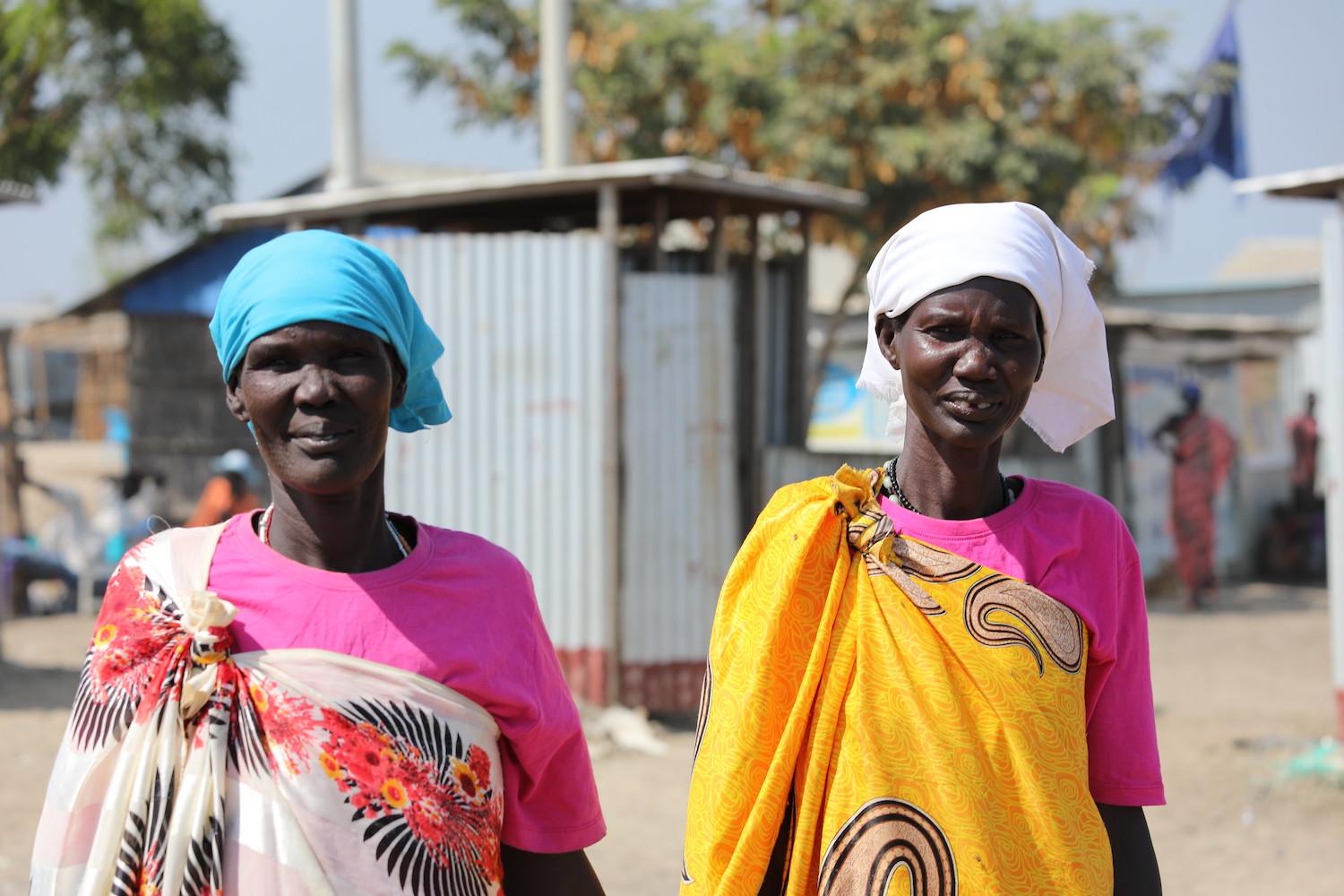
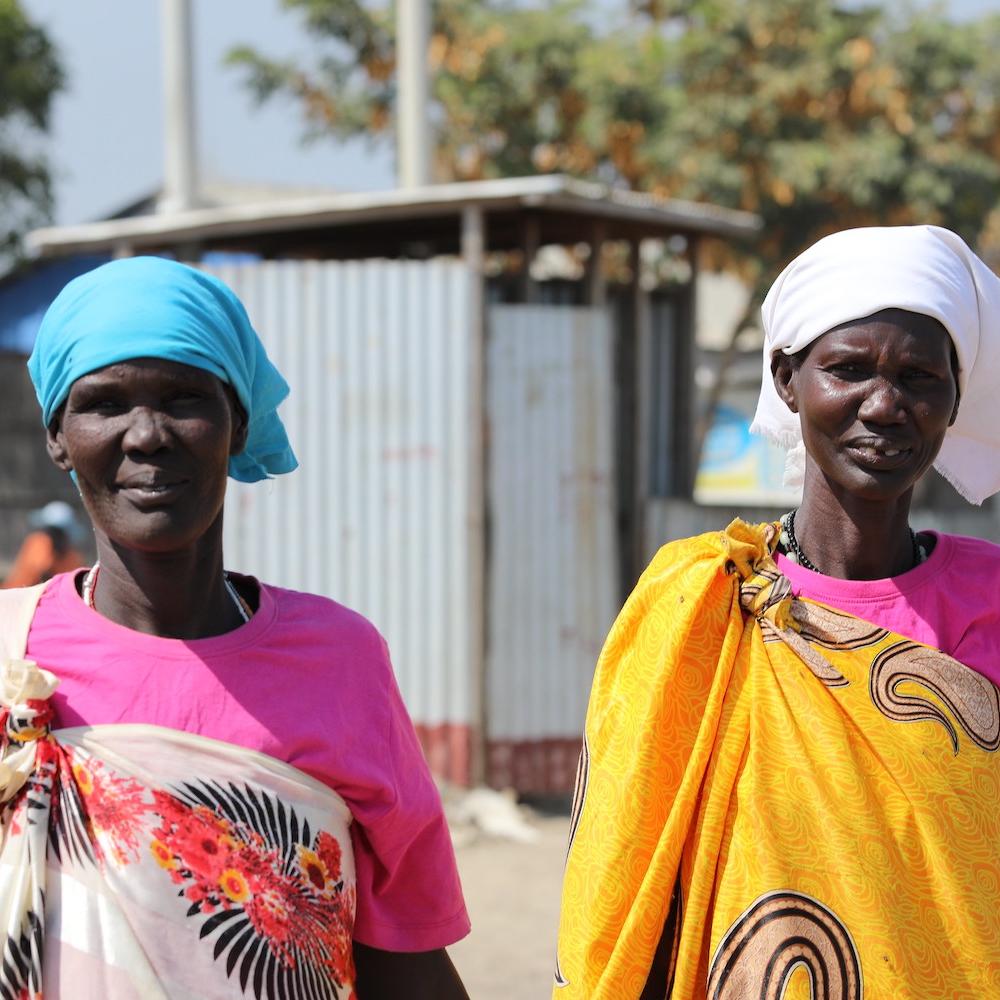
Climate refugees pictured in a makeshift camp in Bentiu, South Sudan, after historic flooding forced an estimated 200,000 people from their homes in 2021, the third consecutive year of serious flooding in the country. (Image credit: U.N. MISS/Flickr)
Major storms struck the opposite coasts of North America over the weekend. Hurricane Fiona made landfall in Puerto Rico on Sunday, killing at least two people and leaving millions without power before battering islands across the Caribbean including Turks and Caicos and the Dominican Republic. Meanwhile remote villages in Alaska are taking stock of the damages from Typhoon Merbok, which affected more than 1,000 miles of coastline. As the global community watches the frequency and intensity of extreme weather events increase before their eyes, experts warn that up to 1.2 billion people could become climate refugees by 2050.
On the sidelines of Climate Week and the U.N. General Assembly, a group of leaders formed a new expert council to address climate-driven migration and put the case of climate refugees on the agenda at the U.N. climate talks this fall.
Launched on Monday, the Climate Migration Council includes chef and humanitarian activist José Andrés, former U.S. cabinet secretaries, and current and former mayors and presidents from around the world. All members signed a Climate Migration Declaration and "committed to press leaders and multilateral organizations on this growing issue."
Expert council looks to address climate-driven migration
The storms that battered Alaska and the Caribbean came after historic flooding killed more than 1,500 people in Pakistan last month and left an estimated 7.6 million others displaced. Meanwhile the Horn of Africa is facing one of its worst droughts on record, with nearly 8 million people driven from their homes in Somalia and Ethiopia alone.
The pace and intensity of climate-related disasters mean people will continue to be displaced, and countries that have avoided or evaded meaningful immigration policy reform for decades, such as the United States, are doing themselves no favors by keeping their heads in the sand.
The Climate Migration Council — launched by Laurene Powell Jobs and her Emerson Collective — looks to combine the influence of policymakers, academics and business leaders to push the issue onto the global agenda.
"We know that the climate crisis acts as a powerful accelerant to migration patterns, and we need legal pathways, clear institutional leadership and new integrated strategies at all levels of governance that anticipate and safely accommodate the increasing numbers of people affected by the climate crisis," the Climate Migration Declaration reads.
Ed O'Keefe, senior White House and political correspondent for CBS News, published an exclusive on the council on Monday and spoke with Marshall Fitz, managing director of immigration for the Emerson Collective, who will help run the new group. "This is not a topic that governments like to entertain because they want to preserve the sovereignty of their borders," Fitz told him. "It's a hard conversation to have, but it's one that if we're going to be responsible about how we manage this large-scale flow of people, we need to get on top of it."
Notably, the council includes Michael Chertoff and Janet Napolitano, two former homeland security secretaries who oversaw U.S. immigration policy, as well as former leaders of the U.S. Central Intelligence Agency (CIA), former presidents of Costa Rica and Colombia, and members of the Mayors Migration Council, a global mayor-led coalition to accelerate action on migration and displacement.
These leaders agreed to four specific action items by signing the declaration — among them financing locally-driven climate adaptation and resilience strategies to "address the root causes of climate-induced migration" and partnering with governments to ensure people who have already been displaced by disasters "have access to humanitarian assistance that meets their essential needs with full respect for their rights wherever they are."
In the short term, that means putting the plight of climate refugees on the agenda at the U.N. climate talks (COP27) in Sharm El Sheikh, Egypt, in November, O'Keefe reported.
Putting climate refugees on the agenda at COP27
"We can no longer treat climate mitigation, climate adaptation, and climate-related migration as separate challenges," the Declaration reads. This would represent a policy departure from past U.N. climate talks, where world leaders made modest moves on financing adaptation and mitigation in developing countries but continued to skirt the issues of climate migration and climate-induced loss and damage, which refers to the fallout from extreme weather events.
At the most recent COP26 talks in Glasgow, leaders pledged more adaptation and mitigation financing for developing countries but failed to establish a dedicated new loss and damage fund after pushback from rich nations like the U.S.
Failing to help vulnerable countries cover the cost of disaster recovery means more displaced people, who will have to wait even longer before returning to their homes — if they ever can.
Chef José Andrés and World Central Kitchen positioned to use their humanitarian expertise to drive new advisory council: Will more business leaders follow suit?
Michelin-starred chef José Andrés founded World Central Kitchen after the 2010 earthquake in Haiti to bring chefs and volunteers together to provide meals immediately following natural disasters and other crises.
The team at World Central Kitchen has moved swiftly to the epicenter of virtually every major disaster since — from Puerto Rico following Hurricane Maria in 2017 to Mozambique after Cyclone Idai two years later. More recently, World Central Kitchen has become the largest food relief organization in war-torn Ukraine, and it's currently on the ground in Puerto Rico, the Dominican Republic and Alaska giving those affected by Fiona and Merbok the comfort of a hot meal.
They'll head to Bermuda, Turks and Caicos and other Caribbean islands affected by Fiona in the coming days. "The experience of the past and the work in many islands around the Caribbean is giving us this know-how in making sure we adapt to the situation," Andrés said in a video message posted to Twitter on Monday.
His expertise in addressing the immediate fallout of natural disasters and speaking to climate refugees and other displaced people will surely be invaluable for the new council. But although the council is billed as "a group of government, business, national security, academic and advocacy experts," Andrés seems to be the only business leader on the member list so far.
Considering that sustainable business coalitions like BSR already identify climate-driven migration as a material issue, business leaders looking to support climate refugees now have a clear avenue to do so in the form of the new council.
"Businesses can act by ensuring people — and the issues that affect our communities — are integrated into climate strategies and net-zero commitments," Eileen Gallagher, associate director of climate and sustainability at BSR, said in a statement. "This includes listening and understanding people most affected by climate change and co-creating solutions with underserved communities, pushing for policy change, protecting human rights, and building resilience to climate change across their value chains."
But the question remains: Will business leaders take the opportunity?
Who Sets the Standard for Diversity and Inclusion?


Standards abound in today’s world of sustainable business and social impact. Organic, Fair Trade, non-GMO, FSC, GOTS, OEKO-TEX, LEED, GRI, SASB, CDP. You get the picture. As we are learning, however, standards do not always prevent greenwashing nor unintended consequences. The same can be true when standards are placed on people.
Black Women Thriving, a recently published report from the diversity, equity and inclusion firm Every Level Leadership, repudiates traditional DEI efforts for not challenging the practices and beliefs that have been normalized by white-dominant culture and considered standard in workplaces across the United States. These business practices have affected the ability of people of color —particularly Black women and gender-expansive individuals — to thrive, assert the report’s authors, Ericka Hines, J.D. and Mako Fitts Ward, Ph.D.
The report provides more than 100 data points and recommendations based on 19 focus groups and a survey of 1,431 Black women (cisgender and transgender) and gender-expansive professionals working in the nonprofit, public and private sectors across the U.S.
“In traditional DEI, a lot of effort went into making sure that everyone gets the same thing — that everybody gets a standard,” Hines said. “We need to have strategies that work for Black women, Indigenous women, Latina women; because if we solve for this, everyone will thrive. It’s not about applying a cookie-cutter approach — it’s about looking at the uniqueness of every underrepresented community and seeing what works for them.”
According to data cited in the report, traditional DEI approaches have benefited white women, though they have not worked for Black women due to “the interplay of sexism, racism and anti-blackness” in many corporate cultures. White women, for example, earn 78.7 percent of white, non-Hispanic men’s earnings, while Black women earn 63 percent, more than Indigenous women (60 percent) and Latinas (55.4 percent).
Standards that have assisted the rise of white women to leadership positions and increased pay in predominantly white organizations have not only created barriers for professional advancement for other marginalized groups, but have often contributed to a rise in burnout among women of color.
“It’s like you have to work twice as hard for half the pay,” one focus group participant shared in the report. “I feel like I am constantly, constantly trying to do at least twice as much as my coworkers to prove myself.”
Black women in the United States are not alone in this experience. Hanieh Khosroshahi shared a similar view in an editorial published in the Stanford Social Innovation Review last year, titled “The Concrete Ceiling.” She writes, “White standards of professionalism, leadership norms and biases, emotional and mental exhaustion, and the lack of management support are just some of the ways individuals and organizations uphold racism in the workplace.”
Standards are only as effective as the intention behind them. While many workplaces have increased efforts to become more diverse, inclusive and equitable, Hines and Fitts Ward argue they have not figured out how to help people thrive. For this reason, BIPOC communities — especially Black, Indigenous, Latinx women and gender-expansive individuals — have been surviving, and not thriving.
“The common definition of thriving in the workplace does not take into account the lived experience of someone who is not white or male,” Hines said. “Everyone is a component of the same part, and the components are people of different races, gender. In order to have a larger thriving organism, we need to get clear on what thriving means.”
Image credit: rawpixel.com/Adobe Stock
Indigenous Peoples and Local Communities Need More Say In Where Their Conservation Funding Goes


A recent report shows that of the $270 million invested annually in conservation funding earmarked for forest management initiatives of Indigenous peoples and local communities, only a fraction reached a named Indigenous or community group.
The report, a collaboration between the Rights and Resources Initiative and the Rainforest Foundation Norway, assesses donor funding between 2011 and 2020. It found that while donors may claim their funding is in support of Indigenous peoples or local communities, only 17 percent of the funds named the group of people they were supporting.
This finding suggests that Indigenous peoples and local communities have relatively little say in how the dollars meant to support them are actually spent. The decision-making is mostly left to large international organizations and multilateral institutions.
Large organizations focus too much on results
Larger organizations have more resources at their disposal and are generally better organized to develop and deliver conservation programs, but their motivations are not necessarily aligned with those of recipient communities — and that’s what should be the top priority.
There’s a tricky balance to strike when we look at the donor-recipient relationship. Donors want to see results; they want to see that their dollars are having a direct impact on the issue they are supporting. In environmental stewardship, that might be planting a certain number of trees or protecting a targeted area of land — some statistic that a donor can identify with and feel rewarded for their contribution.
In another study, the nonprofit consultancy Root Cause found that 75 percent of donors want to see these sorts of results when they open their wallets. Of course, this information is important and provides confirmation that donor funds are indeed going to support the described cause, but it should not become the sole driver of conservation programs.
A narrowed focus on quantifiable impacts might neglect other, more important issues that a community is facing.
For example, engaging in legal battles to defend natural environments can be a costly, time-consuming process — one that might benefit greatly from additional funding. But how can one measure the avoided impact of an unfavorable ruling? It’s not a result that’s easy to report, and the uncertainty behind it does not necessarily entice donors to provide support. Trees planted, on the other hand, is easy to measure and easy to conceptualize.
In other words: Large organizations are well-practiced at providing the types of results that donors want to see. Local communities, however, are better at recognizing where funding can be best spent — whether that investment returns concrete, measurable results or not.
Involving locals in the decision-making process
The primary suggestion of the Rights and Resources report is that donors should support Indigenous peoples and local communities as, “implementers, leaders and partners — not merely beneficiaries.”
Local communities should have more input in how money meant to benefit them is spent. Roughly half of the funding for Indigenous peoples and local communities’ conservation efforts went to multilateral institutions and large international organizations, according to the report. Large international organizations are well removed from local communities and have greater overhead costs that can stretch donation dollars thin.
To ensure that funding is community-led, donors should instead build strong relationships with recipient communities and intermediaries with close relationships in the community such as national and local NGOs.
Indigenous peoples in particular should have their right to self-determination respected as outlined in the United Nations Declaration on the Rights of Indigenous Peoples (UNDRIP). This means, in part, allowing Indigenous peoples to freely pursue their economic, social, and cultural development.
What does this mean for U.S. businesses?
When businesses engage in conservation efforts or charity work, they should be aware of what local communities actually need, rather than planting trees and calling it a job well done.
The push for stricter environmental, social and governance (ESG) measures in the United States is leading to more businesses being mindful of their environmental impacts. Different mitigation efforts, like carbon offsetting, are becoming more popular in the business community. Many of the carbon offset programs available, however, fall into the same results-based trap mentioned above.
Engaging with local communities and Indigenous groups to ensure contributions are achieving their desired impact is a much more robust conservation strategy than waiting to count how many trees your money planted.
Are You Ready To Change the Way You Think About Climate Action?


As any engineer or scientist knows, in a complex system how questions are framed — and by whom — can make all the difference. Our planet is certainly one of the most complex systems there is. The challenge for humankind partly lies in generating new ideas around our planet’s survival, but also in escaping old ideas around its nature and purpose. Our mindset is a critical player in how much progress we make, in what directions, and how quickly.
The recent news that the Arctic is warming much more rapidly than predicted draws yet another line under the urgency for driving change. Extreme heat, wildfires and floods are forcing a tipping point in policy, business and individual action — and, perhaps most importantly, our own mindset. There’s no question this is not just a moment to listen to the science. This is also a human moment: a moment to listen to each other, to come together, face what is happening and agree on a path forward for our planet.
Interestingly, the science being done in the name of climate action isn’t just about new technologies such as renewables. Research is also taking place around how we think about the issue and how what we think determines how we act. Human thought and interaction also form a complex and rarely predictable system — just think about the unfolding human experiment that is social media.
There are also many different but related discussions around climate which are increasingly converging as the situation becomes more dire. Research being done by academics such as Christine Wamsler and others at the Lund University Centre for Sustainability Studies in Sweden highlights the importance of how we think about the problems before us. Changing how we think about our planet is just as critical as building new sustainable technologies. Our mindset influences how we approach problems, and also how we influence other people to adopt new ways of thinking about climate action.
Researchers at Yale’s Program on Climate Change Communication have actually grouped the public into six segments around their attitudes toward climate change: alarmed, concerned, cautious, disengaged, doubtful and dismissive. From 2009 to 2019, the proportion of those alarmed has doubled while those cautious, doubtful and dismissive have shrunk. Expectations on businesses to take climate action continue to increase across customers, employees, shareholders and regulators.
The telecommunications industry may only account for about 1.4 percent of global carbon emissions, but we are seeing strong collaboration across technology providers and network operators taking firm climate action — a conversation also strongly promoted by GSMA, our global trade association. More importantly, our industry has the potential to reduce over 15 percent of global carbon emissions by enabling an accelerated digital transformation across industries.
Ericsson has always taken a science-based and collaborative approach toward climate change, and we have been making steady progress toward our goal of net-zero emissions in our own activities by 2030 and across our entire value chain by 2040. We can do a lot fast: Our own research reveals that the information and communications technology sector can reduce its carbon footprint by 80 percent just by switching to renewable energy sources.
We see further potential by introducing smart energy management solutions, leveraging lithium-ion batteries to reduce the dependencies on diesel generators, which extend to also offloading the public utility grid during peak utilization. In our ambition to pioneer a sustainable future, we are piloting advanced use cases based on 5G, XR, AI and digital twins, for example, to transform our own operations at our U.S. 5G Smart Factory in Texas. Our progress to date has led to the World Economic Forum recognizing our factory as a global front runner in the Fourth Industrial Revolution, awarding the site with its prestigious Global Lighthouse designation in recognition of our deployment of next-generation technology at the site and its subsequent impact.
In approaching the fundamental question of “what is to be done” about climate change, it is our mindset that will help shape the outcome. Viewed through that lens, the work we are doing as a company in the name of our “imagine possible” vision is so much more than an aspirational phrase — it represents a very real and desirable shift in how we view the problems we are facing as human beings.
Like it or not, money is an indicator of the value we place on something. The sheer size of the funding appropriated for climate programs in the U.S. indicates a shift in the value governments and, by extension, their citizens place on our planet and ensuring its sustainable future, which is very encouraging to see.
Markets and investors will respond according to the additional certainty that both private sector and government funding represents. There are increasing signals to the market that we are adopting a long-term view in addressing climate change, which is clearly fundamental for driving exponential climate action and protecting ourselves and our planet for generations to come.
Previously published on Ericsson.com and the 3BL Media newsroom.
Image credit: Annie Spratt/Unsplash